Introduction
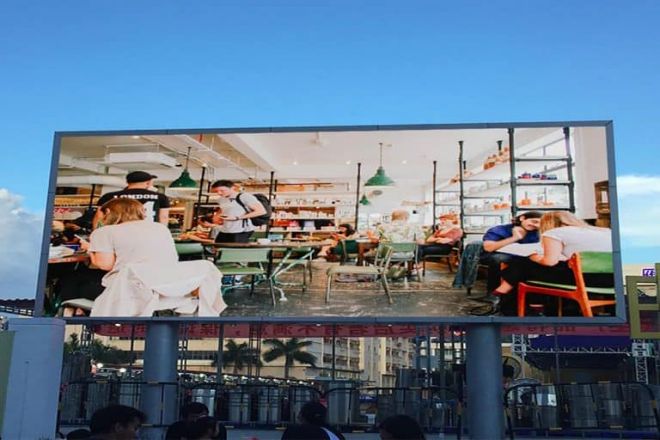
Imagine that when night falls, in the pulse of the city, the dazzling écrans d'affichage LED extérieurs are playing gorgeous pictures, attracting countless eyes. But have you ever thought about how many secrets about stability and durability are hidden behind these amazing displays?
Faced with the unpredictable outdoor environment, wind, sand, rain, high temperature or severe cold, all test the “vitality” of LED display screens. This article goes straight to the point and reveals the secret weapons that can make outdoor LED display screens still shine under harsh conditions.
We will explore in depth from waterproof and dustproof design to stable installation techniques, from efficient heat dissipation system to intelligent brightness adjustment strategy, to indispensable regular maintenance and care. Every detail is designed to help you master the practical methods to ensure the stable operation of LED display screens and extend their service life.
1. Do a good job in the waterproof and dustproof design of LED display screens
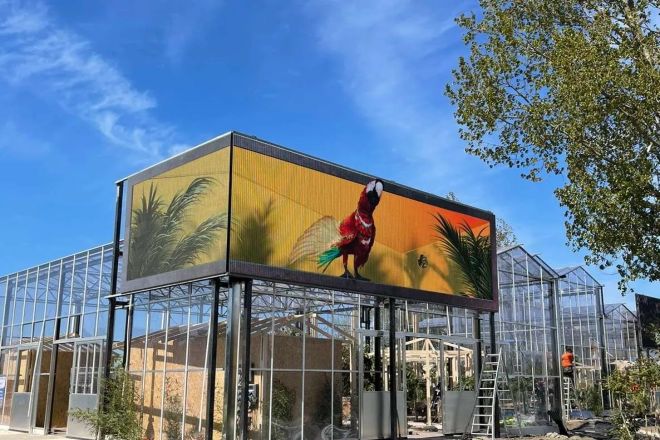
1). The importance of waterproof design
In outdoor environments, LED display screens often face various harsh weather conditions, especially the invasion of rain and moisture. If these natural factors are not effectively protected, they will cause serious potential damage to LED display screens.
First, rainwater directly contacts the internal circuit of the display screen, which may cause short circuits, corrode electronic components, and even cause safety problems such as fire. Secondly, long-term moisture penetration will accelerate the aging of the internal materials of the display screen, affecting the display effect and life.
In addition, humid environments are prone to mold growth, further damaging the structure and performance of the display screen. Therefore, a good waterproof design of the LED display screen is an important measure to ensure its stable operation, extend its service life, and ensure public safety.
2). Waterproof measures
In order to effectively resist rain and moisture in outdoor environments, the waterproof design of LED display screens needs to start from multiple aspects:
- Install waterproof seals:
Install high-quality waterproof seals at key locations such as the edges, interfaces, and cable entrances of the display screen. These seals are usually made of elastic materials and can fit tightly to the surface of the display screen, effectively blocking moisture and dust from entering.
- Use waterproof connectors and cables:
Select connectors and cables with waterproof functions to ensure that when connecting the display screen and external devices, such as the power supply and signal source, moisture will not penetrate into the interior of the display screen through the interface.
- Install drainage system:
In addition to the waterproof design of the display screen itself, a drainage system can also be installed around or under the display screen. This includes setting up drainage ditches, installing water guides, or using automatic drainage devices, so that rain or snow water can be discharged in time when it accumulates, reducing the threat of moisture to the display screen.
- Inspection et entretien réguliers :
Buyers should regularly check whether the waterproof measures of the display screen are intact, including the housing, seals, connectors, and drainage systems.
Once damaged or aged parts are found, they should be replaced in time to ensure that the waterproof performance of the display screen is always in good condition.
- Reasonable site selection and installation:
When installing the LED display, try to choose a location that is sheltered from rain, wind, and dust. If it must be installed outdoors, consider setting up shelters such as awnings and canopies to reduce the impact of direct rain and direct sunlight on the display.
- Choose a professional installation team:
Buyers should choose an installation team with rich experience and professional skills to be responsible for the installation of the display.
They can take appropriate waterproof measures according to the on-site environment and the characteristics of the display to ensure the safety and stability of the display.
3). Case analysis
City Square Outdoor High-Definition LED Display Project
Project background: The project is located in the bustling commercial center square of the city and is an important window for the city’s image display.
Because it is located outdoors and the local climate is changeable, extremely high requirements are placed on the waterproof and dustproof performance of the LED display screen.
3.1). Highlights of waterproof and dustproof design:
Fully enclosed structure design: The display screen adopts a fully enclosed aluminum profile frame structure, combined with high-precision CNC processing technology, to ensure a seamless connection between components and effectively prevent moisture and dust from intrusion.
High waterproof grade materials: All shells and electronic components are made of IP65 and above materials to ensure that the display screen can operate stably in bad weather.
Intelligent temperature control system: The built-in intelligent temperature control system automatically adjusts the internal temperature of the display screen according to the ambient temperature, reduces condensation caused by temperature differences, and further improves the waterproof effect.
Regular maintenance inspection: The project team regularly performs maintenance inspections on the display screen, cleans dust and debris on the dust cover, and ensures that the waterproof and dustproof facilities are always in the best condition.
Project results: Since it was put into use, the outdoor LED display screen has withstood many extreme weather tests, and has always maintained good display effects and stability, becoming a beautiful landscape in the city night scene and winning wide acclaim.
2. Stable installation and structural support of LED display screen
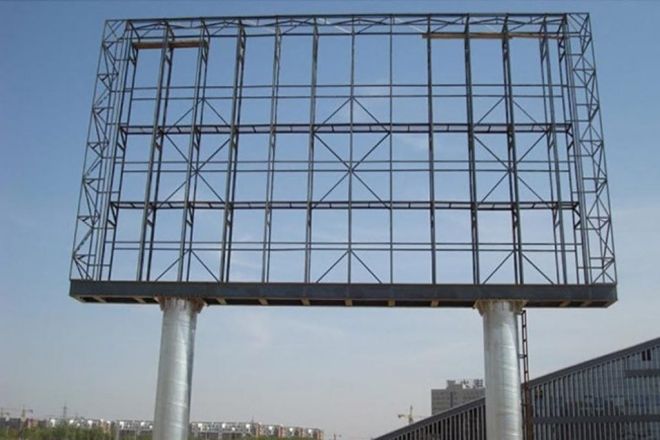
1). The importance of stable installation
In outdoor environments, the stable installation of LED display screens is crucial. External factors such as wind pose a direct threat to the stability and safety of the display screen. The unstable installation will not only cause the display screen to shake and tilt but may even cause a collapse accident, seriously damaging property and personnel safety.
In addition, an unstable display screen may also affect the display effect and reduce the audience’s viewing experience. Therefore, taking effective installation measures to ensure the stability and safety of the LED display screen is the key to ensuring its normal operation and extending its service life.
2). Installation measures
In order to ensure the stable installation of the LED display screen, the following measures need to be taken:
2.1). Choose a suitable bracket and structure to support the screen
- Selection according to the size and weight of the display screen:
First, choose a suitable bracket and structure according to the actual size and weight of the display screen. The bracket should be able to bear the full weight of the display screen and have sufficient strength and rigidity to withstand the impact of wind.
- Tenez compte des facteurs environnementaux :
When selecting brackets and structures, it is also necessary to consider environmental factors of the installation location, such as wind force, earthquake intensity, etc. For areas with strong winds, brackets and structures with stronger wind resistance should be selected.
- Professional design:
The design of the bracket and structure should be professionally designed by professional engineers according to the specific situation to ensure that it meets the requirements of safety, stability, and beauty.
2.2). Ensure that the bracket and structure are firm and reliable and can withstand the impact of wind
High-quality materials: The bracket and structure should be made of high-quality materials, such as steel, aluminum profiles, etc., to ensure their strength and durability.
Fine construction: During the construction process, the design drawings and construction specifications should be strictly followed to ensure that each connection point is firm and reliable, without looseness or cold welding.
Post-installation test: After the installation is completed, a comprehensive test should be carried out, including static load test and dynamic wind load test, etc., to verify the stability and safety of the bracket and structure.
2.3). Regularly check the installation structure to ensure that there is no looseness or damage.
Regular inspection: In order to promptly discover and deal with potential safety hazards, the installation structure should be inspected regularly. The inspection content includes the stability of the bracket, the tightness of the connector, the state of the anti-corrosion coating, etc.
Maintenance: For loose or damaged parts found, they should be repaired or replaced in time. At the same time, necessary maintenance work should be carried out on the bracket and structure, such as cleaning dust, applying anti-corrosion paint, etc.
3). Case Analysis
Outdoor LED Display Project of City Landmark Building
- Contexte du projet :
The landmark building of the city is an outdoor LED display that integrates advertising and city image display. Due to the high installation position and strong wind force, extremely high requirements are placed on the stability and safety of the display.
3.1). Stable Installation Measures:
- Customized Bracket Design:
According to the actual situation of the project, a special bracket with high strength and strong wind resistance is customized. The bracket is made of high-quality steel and is processed by fine processing and heat treatment to ensure its strength and durability.
- Professional Construction Team:
A professional construction team is responsible for the installation work. The construction team strictly operates in accordance with the design drawings and construction specifications to ensure the firmness and reliability of each connection point and the stability of the overall structure.
- Regular Maintenance and Inspection:
The project team regularly inspects and maintains the installation structure of the display. Through regular inspection and maintenance work, potential safety hazards and faults are discovered and handled in a timely manner, ensuring the stable operation of the display and extending its service life.
- Project Results:
Since it was put into use, the outdoor LED display has withstood many extreme weather tests (such as strong winds, heavy rains, etc.) and has always maintained good stability and safety. The display screen has a clear and bright display effect, which has won wide acclaim and praise.
The successful implementation of this project not only enhances the city’s image and cultural connotation but also provides valuable experience and reference for the implementation of similar projects.
3. Temperature control and heat dissipation system of LED display screen
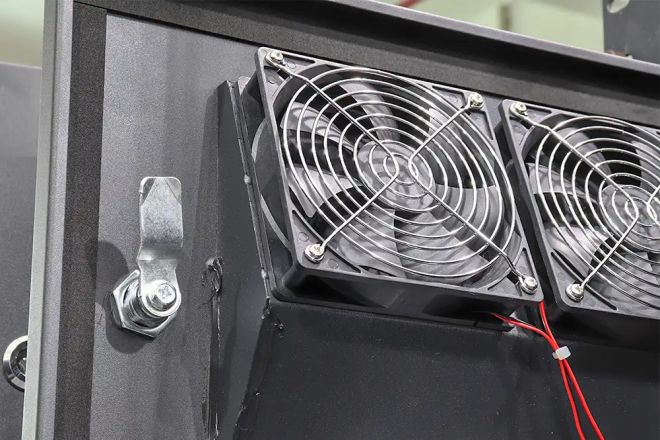
1). The importance of temperature control
During the use of outdoor LED displays, temperature changes have a significant impact on their performance. First of all, the luminous efficiency and working life of LED displays are closely related to temperature.
When the temperature is too high, the working efficiency of the LED chip will decrease, the luminous brightness will be weakened, and the life span will be greatly shortened. In addition, high temperatures may also cause color distortion and uneven brightness of the display screen, seriously affecting the display effect.
Therefore, effective temperature control is crucial to maintain the stable operation of LED displays, extend their service life, and ensure good display effects.
2). Cooling system
A suitable heat dissipation system must be used to control the operating temperature of the LED display. Here are the main components of a cooling system and their importance:
2.1). Use a suitable cooling system
- Natural heat dissipation:
suitable for small or low-power LED displays. By increasing the heat dissipation area and optimizing the heat dissipation structure, natural air convection is used to dissipate heat. However, this method has limited effectiveness in outdoor high temperature environments.
- Dissipation thermique du ventilateur :
By installing a fan inside or outside the display screen, the air flow generated by the fan is used to accelerate the dissipation of heat. This method has better heat dissipation effect, but it will increase noise and energy consumption, and requires regular maintenance.
- Dissipation thermique du caloduc :
Using the principle that the working fluid inside the heat pipe absorbs heat at the evaporation end and releases heat at the condensation end, the heat is quickly transferred to the heat sink or cooling fan for dissipation. It has the advantages of high heat dissipation efficiency, low noise and easy maintenance.
- Liquid cooling:
A cooling pipe is set up inside the display to use circulating cooling liquid to take away heat. The cooling effect is very good, but the cost is higher and requires special maintenance and management.
2.2). Ensure radiator design and layout are appropriate.
The design of the radiator should fully consider factors such as heat dissipation area, heat dissipation channels, and heat conduction efficiency. By increasing the heat dissipation area and optimizing the heat dissipation channel structure, the heat dissipation efficiency is improved.
The layout of the heat sink should ensure smooth air circulation and avoid heat accumulation inside the display. At the same time, care should also be taken to avoid mutual interference between the radiator and other components of the display.
2.3). Clean radiator regularly
The accumulation of dust will seriously affect the cooling effect of the radiator. Therefore, dust and debris on the surface of the radiator should be cleaned regularly to ensure the normal operation of the radiator.
During the cleaning process, care should be taken to avoid using sharp or hard tools to scratch the surface of the radiator so as not to affect its heat dissipation performance.
3). Case study
Shopping center outdoor high-definition LED display
3.1). Caractéristiques:
- Efficient heat dissipation system:
The outdoor high-definition LED display adopts a composite heat dissipation system that combines heat pipe cooling and fan cooling.
Heat pipe cooling can quickly transfer the heat generated by the LED chip to the heat sink, while the fan accelerates the heat dissipation on the heat sink by generating airflow.
This composite heat dissipation system greatly improves heat dissipation efficiency and ensures the stable operation of the display in outdoor high-temperature environments.
- Reasonable layout design:
The design and layout of the radiator fully considers air circulation and heat conduction efficiency. The heat sink is evenly distributed and has a large area, and the heat dissipation channel design is reasonable and smooth, effectively avoiding the accumulation of heat inside the display.
- Système de contrôle intelligent de la température :
The product has a built-in intelligent temperature control system that can automatically adjust the operating status of the cooling equipment according to the ambient temperature.
Reduce fan speed when the temperature is low to reduce noise and energy consumption; increase fan speed when the temperature is high to improve heat dissipation efficiency. This intelligent temperature control system not only improves the heat dissipation effect but also reduces operating costs.
- Effet d'application :
Since this outdoor high-definition LED display was put into use, it has maintained stable operation under a variety of severe weather conditions. It can maintain good display effect and long service life even in high temperature and hot summer. Its efficient cooling system has been highly praised by users and has become the leader among similar products on the market.
4. Light control and adaptive brightness technology of LED display
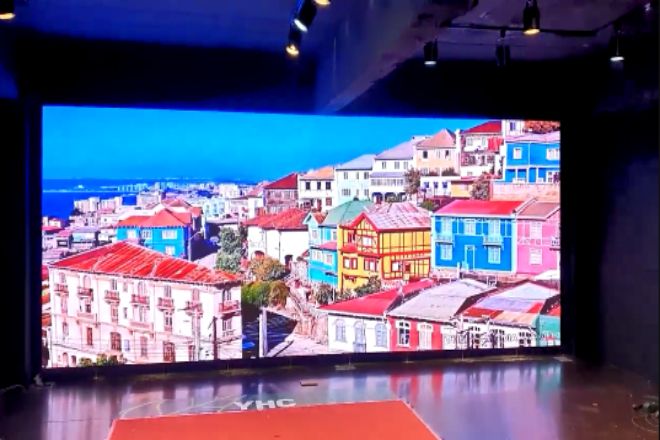
1). The importance of light control
In outdoor environments, LED displays are often interfered with by various external light sources such as sunlight, street lights, and car lights.
These light sources can have a significant impact on the screen’s display effect. First of all, strong direct sunlight will cause the screen brightness to be relatively insufficient, making the picture dim and making it difficult to present content clearly.
Secondly, reflection and scattering from other external light sources can also cause glare or light spots on the screen, further reducing the viewing experience. Therefore, effective light control is crucial to improving the display effect of outdoor LED displays.
2). Adaptive brightness technology
- The principle of adaptive brightness control technology
Adaptive brightness control technology is a technology that automatically adjusts the brightness of the display based on changes in ambient light. This technology monitors the light intensity of the surrounding environment in real-time through a built-in optical sensor and converts the collected optical signals into electrical signals for processing.
Based on the processing results, the control system will adjust the brightness level of the display to ensure the best display effect under different lighting conditions.
Specifically, when the ambient light is dark, the display will automatically reduce the brightness to reduce energy consumption and glare; when the ambient light is bright, the display will increase the brightness to ensure the clarity and visibility of the picture.
- Application of adaptive brightness control technology
Adaptive brightness control technology has been widely used in various outdoor LED display projects. Whether it is commercial billboards, traffic sign screens or display equipment in sports venues, this technology is used to improve the display effect and user experience.
Through this technology, the display can automatically adjust the brightness level under different time periods and weather conditions, ensuring that the clarity and color reproduction of the picture are always optimal.
- Positive effect
Adaptive brightness control technology has a positive effect on improving display effects and extending screen life. First, by automatically adjusting brightness levels, the technology can reduce glare and light spots, improving the viewer’s viewing experience.
Secondly, this technology can also reasonably allocate energy usage according to changes in ambient light, reducing the energy consumption and operating costs of the display.
Finally, by reducing the operating time and frequency of the display at extreme brightness, this technology can also effectively extend the life of the LED chip and the stability of the overall device.
- Demonstrate the display effect of outdoor LED displays equipped with this technology.
Outdoor LED displays with adaptive brightness control technology perform well in display effects. Whether it is during the day with strong direct light or at night with low light, the display can automatically adjust the brightness level according to changes in ambient light to ensure consistent picture clarity and color reproduction.
In addition, this technology can also reduce picture flicker and color distortion caused by light changes, further improving the audience’s viewing experience.
3). Case study
3.1). Commercial center outdoor LED display project
- Contexte du projet :
It is a large panneau d'affichage extérieur in the city’s commercial center area. Due to the dense flow of people in this area and the complex changes in light (including sunlight, street lights, car lights, and other light sources), extremely high requirements are placed on the display effect of the display.
- Application technologique :
In order to improve the display effect and user experience, this project uses adaptive brightness control technology.
The built-in optical sensor monitors the light intensity of the surrounding environment in real-time and automatically adjusts the brightness level of the display based on the processing results.
At the same time, the project also uses high-brightness LED chips and advanced image processing technology to ensure picture clarity and color reproduction.
- Effet d'application :
Since the project was put into operation, the outdoor LED display has been widely praised for its display effect. Whether during the day or at night, the display automatically adjusts the brightness level according to changes in ambient light, ensuring consistent picture clarity and color reproduction.
In addition, this technology also greatly reduces the energy consumption and operating costs of the display, resulting in a higher return on investment for advertisers. The successful application of this project also provides valuable experience and reference for similar outdoor LED display projects.
Conclusion
To sum up, the stable and long-lasting operation of outdoor LED displays is a systematic project that requires careful consideration of design, installation, maintenance, and other aspects.
By adopting advanced waterproof and dustproof technology, ensuring stable installation and structural support, implementing effective temperature control and cooling systems, applying light control and adaptive brightness technology, and performing regular maintenance and upkeep, we can significantly improve outdoor LED displays.
The operation stability and service life of the screen. This not only helps improve user experience and satisfaction but also effectively extends the service life of the product and reduces operating costs.
Enfin, si vous souhaitez en savoir plus sur les écrans LED, veuillez nous contacter.
